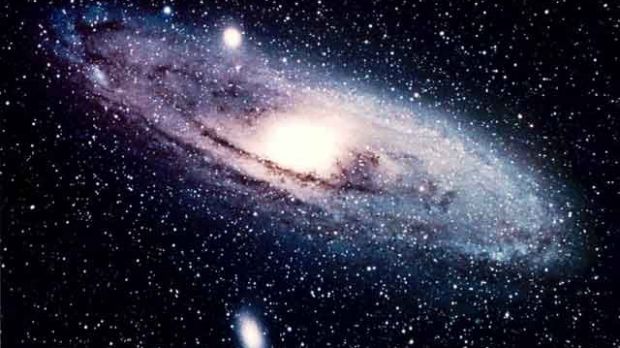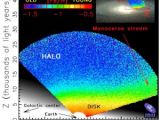The most detailed map of the chemical composition of the galaxy we live in has been recently released by the research team of the Sloan Digital Sky Survey, after completing the study of a population of stars extending on a radius of more than 30,000 light years around the Sun.
"This compilation of the compositions of more than 2.5 million stars in the Milky Way will greatly enhance our understanding of our galactic home, and likely will help to solve some mysteries about our Galaxy's birth and growth", said professor Donald Schneider, from the Pennsylvania State University and leader of the Sloan Digital Sky Survey research team.
Although this is not the first time a map of the chemical composition of the galaxy is made, the latest is by far the most detailed, due to the extensive samples of stars studied and the relative distances it encompasses. "Older sky surveys that did include a lot of stars were not accurate enough to measure the chemical composition of those stars. With the new SDSS map, astronomers can begin to tackle many unsolved mysteries about the birth and growth of the Milky Way", said astronomer Zeljko Ivezic of the University of Washington, lead author of the paper.
Some elements heavier than hydrogen, such as helium and lithium, have been created immediately after the Big Bang event, although the vast majority have been forged either in the cores of the stars or during the supernova explosions of massive stars. Therefore, some of the first stars that formed in the Milky Way and the universe were mostly supermassive objects made up of hydrogen gas. These stars with low metallicity (low metal content, or low content of elements heavier than hydrogen) are known as Population III.
As Population III stars exploded at the end of their lives, their content was ejected into the surrounding space to be later gathered by clouds of gas and form the second generation of stars, with a metallicity level somehow higher than that of Population III. Our Sun for example, is a Population I star with a relatively high content in metals.
Hence, understanding the evolution of stars with low metallicity can reveal how heavy elements are created and how they evolve. The situation is reciprocal, meaning that mapping the chemical composition of a galaxy can reveal how it evolved in time. This is in fact the main purpose of the new map created by the Sloan Digital Sky Survey.
"The map of the distribution of metallicity for several million stars reveals the differing content of chemical elements in the stellar populations of our Galaxy", said Ivezic. The content of stars is evaluated according to the spectrum of light they emit. For example, low metallicity stars tend to emit more light towards the blue wavelengths of the visible spectrum. The Sun on the other hand, although it seems to emit white light is in fact more inclined towards the red end of the electromagnetic spectrum, generating a yellowish-white light. "By using two-dimensional images in different colors, we built up a three-dimensional 'tomographic' map that clearly delineates the disk and halo components of the Milky Way", he said.
Maps related to the chemical content of galaxies can also reveal past interactions with other dwarf satellites and galaxies. The Monoceros Stream in the Milky Way is just one of the collections of stars in the galaxy that appear to have different metallicity, meaning that it's probably the remnant of a satellite assimilated by the Milky Way a long time ago.

 14 DAY TRIAL //
14 DAY TRIAL // 
